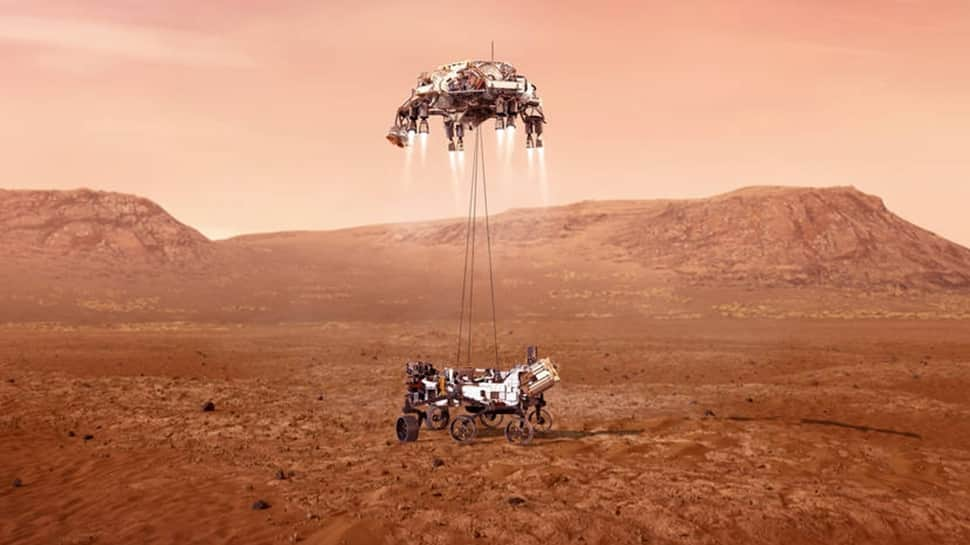Nasa’s Mars rover Perseverance, the most advanced astrobiology lab ever sent to another world, streaked through the Martian atmosphere on Thursday and landed safely inside a vast crater, the first stop on a search for traces of ancient microbial life on the Red Planet.

Mission managers at Nasa’s Jet Propulsion Laboratory (JPL) near Los Angeles burst into applause, cheers and fist-bumps as radio beacons signalled that the rover had survived its perilous descent and arrived as planned on the floor of Jezero Crater, site of a long-vanished Martian lake bed.
The six-wheeled vehicle came to rest about two kilometres from towering cliffs at the foot of a remnant fan-shaped river delta etched into a corner of the crater billions of years ago and considered a prime spot for geo-biological study on Mars.
“Touchdown confirmed,” Swati Mohan, the lead guidance and operations specialist announced from the control room. “Perseverance safely on the surface of Mars.”
The robotic vehicle sailed through space for nearly seven months, covering 293 million miles (472 million km) before piercing the Martian atmosphere at 12,000 miles per hour (19,000 km per hour) to begin its descent to the planet’s surface.
Moments after touchdown, Perseverance beamed back its first black-and-white images from the Martian surface, one of them showing the rover’s shadow cast on the desolate, rocky landing site.
Because it takes radio waves 11 minutes to travel from Mars to Earth, the SUV-sized rover had already reached Martian soil by the time its arrival was confirmed by signals relayed to Earth from one of several satellites orbiting Mars.
The spacecraft’s self-guided descent and landing during a complex series of manoeuvres that Nasa dubbed “the seven minutes of terror” stands as the most elaborate and challenging feat in the annals of robotic spaceflight.
Acting Nasa chief Steve Jurczyk called it an “amazing accomplishment,” adding, “I cannot tell you how overcome with emotion I was.”
Deputy Project Manager for the rover, Matt Wallace, said the descent and landing systems “performed flawlessly.”
The landing represented the riskiest part of two-year, $2.7 billion endeavours whose primary aim is to search for possible fossilized signs of microbes that may have flourished on Mars some three billion years ago when the fourth planet from the sun was warmer, wetter and potentially hospitable to life.
Scientists hope to find biosignatures embedded in samples of ancient sediments that Perseverance is designed to extract from Martian rock for future analysis back on Earth – the first such specimens ever collected by humankind from another planet.
Two subsequent Mars missions are planned to retrieve the samples and return them to Nasa in the next decade, in collaboration with the European Space Agency.
Thursday’s landing also came as a triumph for the pandemic-weary United States, still gripped by economic and social upheaval from the Covid-19 pandemic.
The public health crisis emerged in the months before the rover was launched in July and complicated execution of the Mars mission.
US President Joe Biden, watching Nasa coverage of the event at the White House, tweeted his congratulations, saying, “Today proved once again that with the power of science and American ingenuity, nothing is beyond the realm of possibility.”
Congratulations to NASA and everyone whose hard work made Perseverance’s historic landing possible. Today proved once again that with the power of science and American ingenuity, nothing is beyond the realm of possibility. pic.twitter.com/NzSxW6nw4k
— President Biden (@POTUS) February 18, 2021




